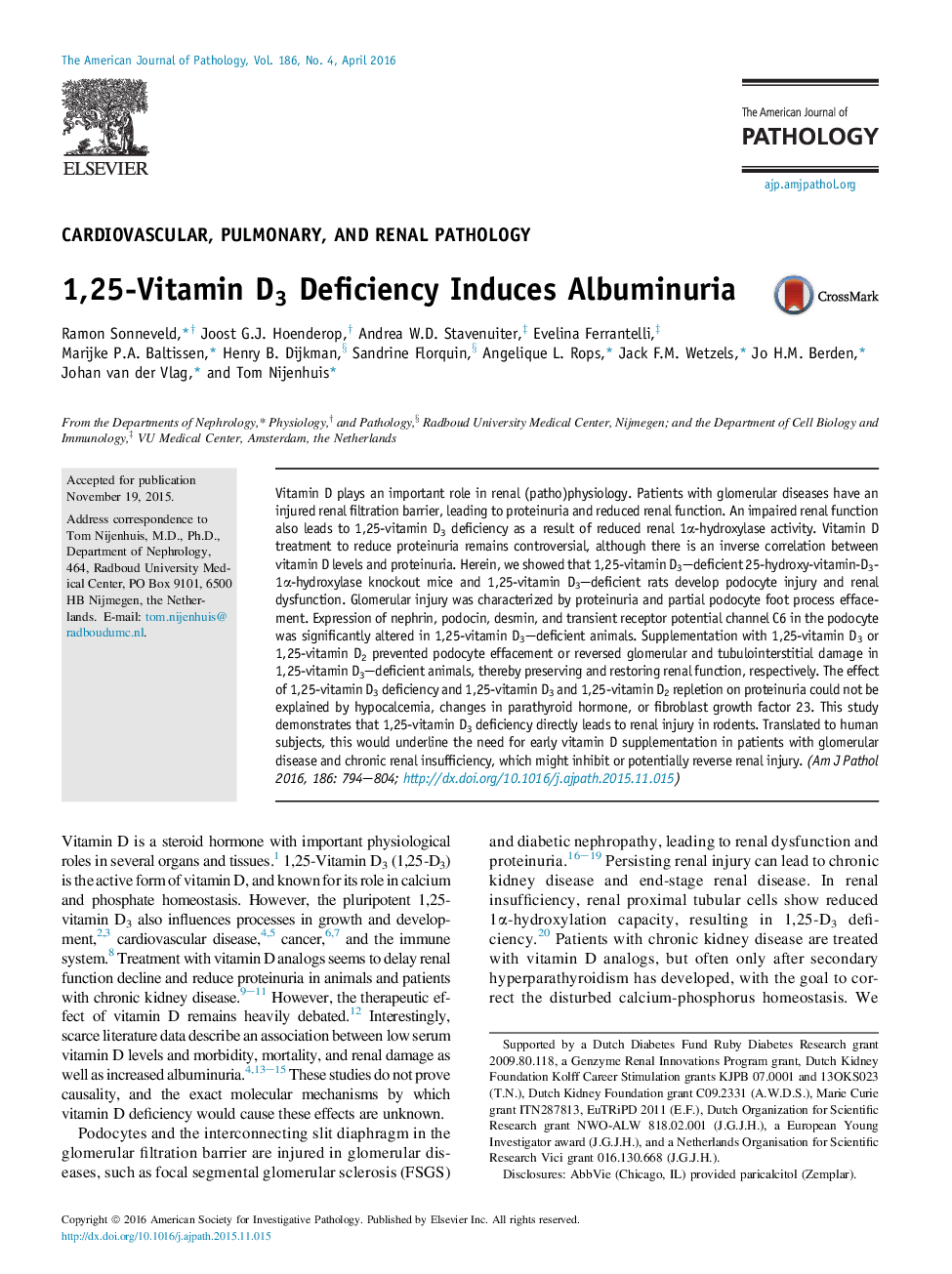| Article ID | Journal | Published Year | Pages | File Type |
|---|---|---|---|---|
| 2865733 | The American Journal of Pathology | 2016 | 11 Pages |
Vitamin D plays an important role in renal (patho)physiology. Patients with glomerular diseases have an injured renal filtration barrier, leading to proteinuria and reduced renal function. An impaired renal function also leads to 1,25-vitamin D3 deficiency as a result of reduced renal 1α-hydroxylase activity. Vitamin D treatment to reduce proteinuria remains controversial, although there is an inverse correlation between vitamin D levels and proteinuria. Herein, we showed that 1,25-vitamin D3–deficient 25-hydroxy-vitamin-D3-1α-hydroxylase knockout mice and 1,25-vitamin D3–deficient rats develop podocyte injury and renal dysfunction. Glomerular injury was characterized by proteinuria and partial podocyte foot process effacement. Expression of nephrin, podocin, desmin, and transient receptor potential channel C6 in the podocyte was significantly altered in 1,25-vitamin D3–deficient animals. Supplementation with 1,25-vitamin D3 or 1,25-vitamin D2 prevented podocyte effacement or reversed glomerular and tubulointerstitial damage in 1,25-vitamin D3–deficient animals, thereby preserving and restoring renal function, respectively. The effect of 1,25-vitamin D3 deficiency and 1,25-vitamin D3 and 1,25-vitamin D2 repletion on proteinuria could not be explained by hypocalcemia, changes in parathyroid hormone, or fibroblast growth factor 23. This study demonstrates that 1,25-vitamin D3 deficiency directly leads to renal injury in rodents. Translated to human subjects, this would underline the need for early vitamin D supplementation in patients with glomerular disease and chronic renal insufficiency, which might inhibit or potentially reverse renal injury.
